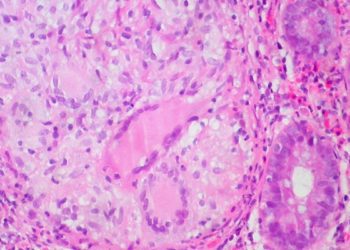Variation noted across pre- and post-marketing studies for FDA approved devices
1. This study found that in addition to the pivotal study required for approval, the Food and Drug Administration (FDA) approved high-risk medical devices had a median number of 1 nonpivotal study prior to approval and a median number of 3 post-market studies, though approximately 18% had no post market studies and approximately half had 3 or fewer post market studies.
2. Of the post market studies conducted, approximately half were focused on indications that differed from the indication for which the device originally received FDA approval and approximately half used a surrogate disease marker rather than a clinical outcome as their endpoint.
Evidence Rating Level: 2 (Good)
Study Rundown: The Food and Drug Administration (FDA) approves new high-risk medical devices based on a premarket approval pathway, a pathway that requires the completion of studies that demonstrate device effectiveness and safety. There have been recent concerns, however, that the data from these studies do not provide sufficient assurance of the safety of approved devices. In response to this concern, the FDA has increased its focus on examining post market evidence of safety and efficacy as well. This study examined the clinical studies of high-risk therapeutic devices approved by the FDA between 2010-2011 to characterize the evidence provided by both pre approval and post approval studies.
During this time period, 28 high-risk therapeutic devices obtained FDA approval. All devices were studied in a pivotal study, which demonstrated device safety and effectiveness and is required for FDA approval. This study found that FDA approved high-risk medical devices additionally had a median number of 1 nonpivotal study prior to approval, a type of study that aims to examine the feasibility of the device and helps guide further device investigation. This study noted a median number of 3 post-market studies for high-risk devices, although approximately 18% had no post market studies and approximately 46% had 3 or fewer post market studies. Of the post market studies conducted, approximately 46% were focused on indications that differed from the indication for which the device originally received FDA approval and approximately 48% used a surrogate disease marker rather than a clinical endpoint. Strengths of this study include its inclusion of all pivotal trials for high-risk medical devices during the study period. However, its reliance on clinicaltrials.gov for finding trials may have resulted in the non-inclusion of some nonpivotal trials or post-market studies not registered on the site. Nevertheless, this study provides insight into the wide degree of variation in pre and post market studies for FDA approved high-risk medical devices.
Click to read the study, published today in JAMA
Relevant Reading: A Lifecycle Approach to the Evaluation of FDA Approval Methods and Regulatory Actions: Opportunities Provided by a New IOM Report
In-Depth [cross-sectional study]: This study used the publicly accessible premarket approval pathway database to identify high-risk devices receiving approval between January 1, 2010 and December 31, 2011, and then primarily identified associated trials for inclusion using clinicaltrials.gov registration. A total of 28 devices were granted FDA approval between 2010-2011 and 286 clinical trials were identified. A median number of 1 nonpivotal pre market study was identified (interquartile range 0-2) while a median number of 3 post market studies were identified (interquartile range 1-6). About 17.9% of devices had none and 46.4% had 3 or fewer post approval studies. A total of 83 of 179 post market studies were for indications that differed from the indication for which the device originally received FDA approval, 26 of which were completed studies and 153 of which were ongoing studies. Of 27 completed post market studies, 48.1% used a surrogate marker of disease as an endpoint and of 155 ongoing post market studies, 41.9% used a surrogate disease marker.
Image: PD
©2015 2 Minute Medicine, Inc. All rights reserved. No works may be reproduced without expressed written consent from 2 Minute Medicine, Inc. Inquire about licensing here. No article should be construed as medical advice and is not intended as such by the authors or by 2 Minute Medicine, Inc.







